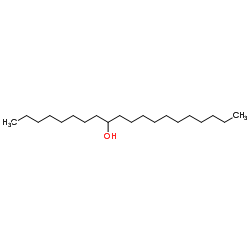Airway responsiveness of rabbits after exposure to 2-octyl dodecanol.
Thomas Mensing, Hajo-H Fricke, Wolfgang Marek, Bruno Voss, Thomas Brüning, Michael Wilhelm
Index: AIHA J. (Fairfax,. Va.) 64(4) , 461-6, (2003)
Full Text: HTML
Abstract
Cooling lubricants are used in the metal industry during drilling or turning. Vapors and aerosols of these lubricants are suspected to induce airway hyperresponsiveness (AHR) in exposed workers. In a previous study the authors demonstrated that water-soluble lubricants induce AHR after acute exposure of rabbits to concentrations near the German MAK value (10 mg/m(3)). In the present investigation the influence of a fatty alcohol as special non-water-soluble cooling lubricant was examined to determine its influence on airway responsiveness (AR). The effects of an aerosolized non-water-soluble lubricant (40, 90, and 220 mg/m(3)) on AR to acetylcholine in a rabbit model were studied. Lubricant atmosphere analysis was performed with infrared spectroscopy. Before exposure, after 2 and 4 hours of application, AR to aerosols from 0.2 and 2% acetylcholine was tested. Basal airway and cardiovascular parameters as well as blood gases did not change during exposure. Lubricant aerosol concentration of 40 and 220 mg/m(3) for 4 hours did not significantly alter AR. Inhalation of 90 mg/m(3) lubricant increased contractile response to ACH significantly. In contrast to formerly investigated water-soluble cooling lubricants, the examined non-water-soluble lubricant did not increase AR in concentrations near the MAK; however, in higher concentrations a significant (p<.05) increase was obtained.
Related Compounds
| Structure | Name/CAS No. | Molecular Formula | Articles |
|---|---|---|---|
 |
9-Icosanol
CAS:5333-42-6 |
C20H42O |
|
Development of ciclopirox olamine topical formulations: eval...
2015-03-01 [Pharm. Dev. Technol. 20(2) , 197-203, (2015)] |
|
The effect of alcohol structures on the interaction mode wit...
2012-07-02 [Chemistry 18(27) , 8515-20, (2012)] |
|
Contact sensitivity to octyldodecanol and trometamol in an a...
2007-05-01 [Contact Dermatitis 56(5) , 289-90, (2007)] |
|
Final report on the safety assessment of Octyidodecyl Stearo...
2001-01-01 [Int. J. Toxicol. 20 Suppl 3 , 51-9, (2001)] |
|
Development of topical hydrogels containing genistein-loaded...
2012-04-01 [J. Biomed. Nanotechnol. 8(2) , 330-6, (2012)] |